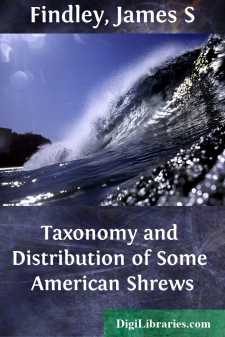Categories
- Antiques & Collectibles 13
- Architecture 36
- Art 48
- Bibles 22
- Biography & Autobiography 813
- Body, Mind & Spirit 142
- Business & Economics 28
- Children's Books 17
- Children's Fiction 14
- Computers 4
- Cooking 94
- Crafts & Hobbies 4
- Drama 346
- Education 46
- Family & Relationships 57
- Fiction 11829
- Games 19
- Gardening 17
- Health & Fitness 34
- History 1377
- House & Home 1
- Humor 147
- Juvenile Fiction 1873
- Juvenile Nonfiction 202
- Language Arts & Disciplines 88
- Law 16
- Literary Collections 686
- Literary Criticism 179
- Mathematics 13
- Medical 41
- Music 40
- Nature 179
- Non-Classifiable 1768
- Performing Arts 7
- Periodicals 1453
- Philosophy 64
- Photography 2
- Poetry 896
- Political Science 203
- Psychology 42
- Reference 154
- Religion 513
- Science 126
- Self-Help 84
- Social Science 81
- Sports & Recreation 34
- Study Aids 3
- Technology & Engineering 59
- Transportation 23
- Travel 463
- True Crime 29
Taxonomy and Distribution of Some American Shrews
by: James S Findley
Description:
Excerpt
Sorex cinereus ohionensis Bole and Moulthrop.—In their description of this subspecies from Ohio, Bole and Moulthrop (1942:89-95) made no mention of specimens in the United States Biological Surveys Collection from Ellsworth and Milford Center, Ohio, which stand in the literature (see Jackson, 1928:49) as Sorex cinereus cinereus. These two localities lie south of the geographic range ascribed to S. c. ohionensis by Bole and Moulthrop. Examination of the two specimens, United States Biological Surveys Collection, Catalogue No. 70566, and United States National Museum, No. 19434, respectively, both of which are alcoholics, reveals that they are referable to the subspecies ohionensis rather than to S. c. cinereus. This reference is made on the basis of small size, short tail (33 and 31 millimeters, respectively), and fourth upper unicuspid as large as third (the specimen from Milford Center lacks the skull). The occurrence at Milford Center provides a southward extension of known range for S. c. ohionensis of approximately 70 miles. S. c. cinereus seems not to occur in Ohio.
Cryptotis micrura (Tomes).—Davis (1944:376) assigned a Cryptotis from Boca del RÃo, Veracruz, to Cryptotis parva berlandieri (Baird). Comparison of this specimen, Texas Cooperative Wildlife Collections, No. 2765, with 8 specimens of C. micrura from various parts of northern Veracruz and with 9 C. parva from southern Tamaulipas reveals that the shrew from Boca del RÃo is referable to Cryptotis micrura. The series of 8 specimens in the University of Kansas Museum of Natural History from Altamira, Tamaulipas, provides the southernmost known record of Cryptotis parva berlandieri. These 8 specimens are typical of C. p. berlandieri and show no approach to C. micrura. Average and extreme cranial measurements of 7 specimens from 1 mi. S Altamira are: condylobasal length, 15.6 (15.2-16.1); palatal length, 6.6 (6.4-6.7); maxillary tooth-row, 5.7 (5.4-5.8); cranial breadth, 7.6 (7.4-8.0); least interorbital breadth, 3.5 (3.4-3.7); maxillary breadth, 5.0 (4.8-5.2). Cranial measurements of 8 specimens of C. micrura from various localities in northern Veracruz (1 km. E Mecayucan, 1; 7 km. NNW Cerro Gordo, 3; Teocelo, 2; 7 km. W El Brinco, 1; 5 km. N Jalapa, 1) are: condylobasal length, 17.1 (16.6-17.4); palatal length, 7.1 (6.9-7.4); maxillary tooth-row, 6.2 (5.9-6.4); cranial breadth, 8.5 (8.3-8.6); least interorbital breadth, 3.7 (3.6-4.1); maxillary breadth, 5.3 (5.1-5.6). C. parva and C. micrura may intergrade but a distance of 140 miles separates the geographic ranges as now known of the two kinds and every specimen examined by me is clearly referable to one or the other of the two named kinds and shows no evidence of intergradation.
Notiosorex crawfordi crawfordi Baird.—A specimen in the Museum of Natural History from Jaumave, and one from Palmillas, Tamaulipas, collected by Gerd Heinrich, provide records of the easternmost margin of the range of this species in Mexico. Assignment is made to the subspecies crawfordi on geographic grounds....


